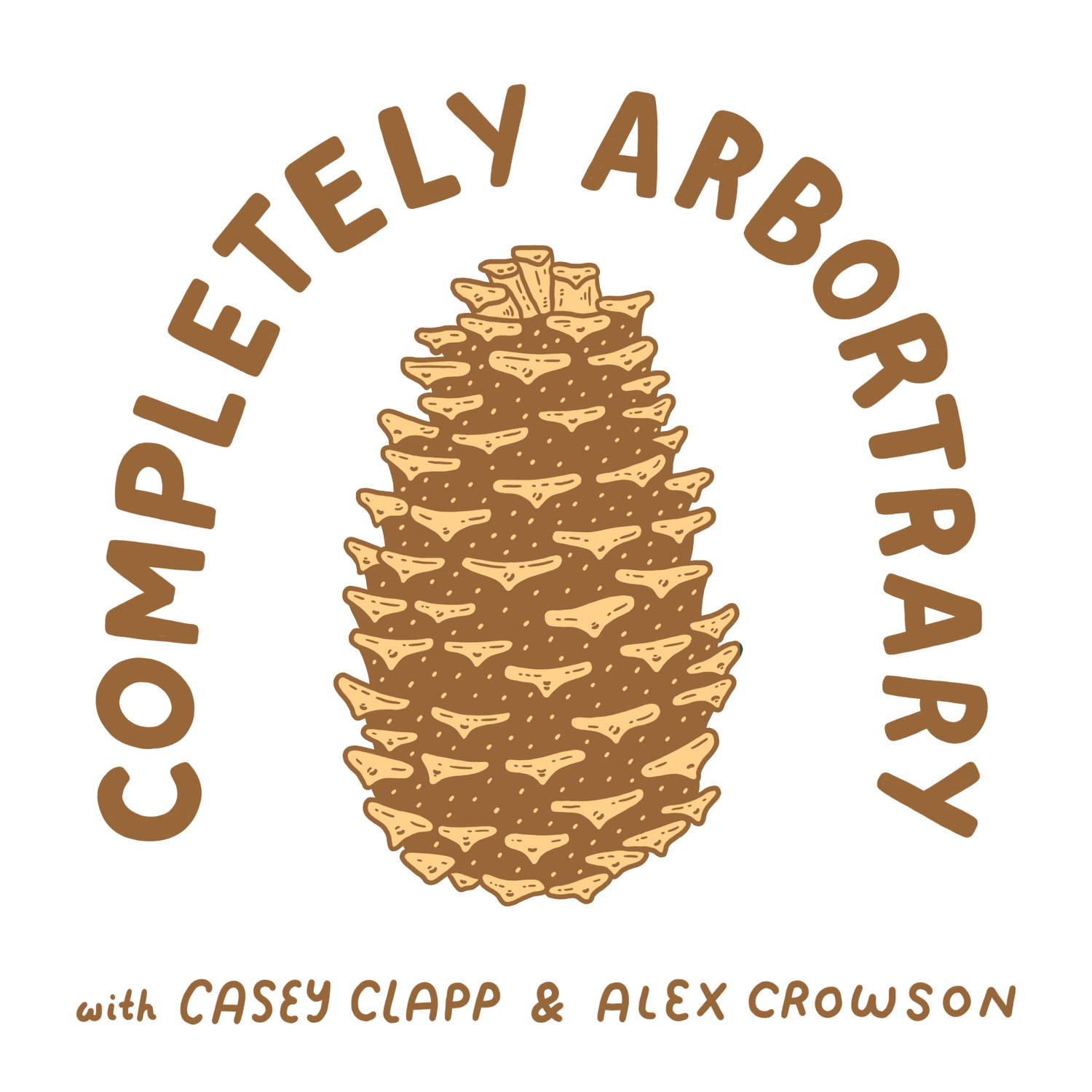PAINTING WITH NATURE (JAPANESE CHERRY)
Kon'nichiwa! This week we jet over to Japan to discuss a gorgeous, renowned, and cultivated-like-heck tree, the Japanese cherry (Prunus serrulata). Dive deep into cultivar(ism) with us while we talk about Shinto, picnics, and painting with nature. As always, we finish the whole shebang with a listener question.
Japanese Cherry
(Prunus serrulata)
The Japanese cherry is a renowned species of tree these days because of its sublime beauty in early spring. Planted far and wide outside of their native habitat, Japanese cherries (Prunus serrulata) are so well-known that often they are the only trees that people can readily identify, at least when their blooms are in full tilt. Cherry blossoms have a place of honor in the Patheon of vernal flowers wherever they are planted—which is to say nearly everywhere in the Northern Hemisphere. And it’s by no accident that they enjoy such reverence today because they’ve held this elevated status for thousands of years.
Growing among the forests of Japan, Korea, and China, the Japanese cherry had the good fortune to catch the collective eye of a people who viewed and interacted with their natural environment in unique ways. Those people were the Ancient Japanese.
The ancient Japanese were not unique in having a close relationship with their natural environment. Every culture in the world, to one degree or another, is dependent on the natural environment around them, and, at one time or another, was intimately connected to their local flora and fauna. Many still maintain these traditional relationships today. What made the ancient Japanese unique is that they expanded their relationship with the natural world around them from the pragmatic to the aesthetic, and they tied it all together within a spiritual web that helped inform their culture and traditions.
For most of human history, before world-wide religions and mass cultural exchanges, a given people’s identity was often based on their beliefs. These people, from this place, had these beliefs and these cultural values. Those people from over there had those beliefs and those cultural values. So on and so forth across the globe: every people had their own culture, spirituality and often language that defined them as a people. Today we call these indigenous religions, and we can understand them as the set of spiritual beliefs that a people held prior to influences from other spiritual ideologies from other parts of the world. In Japan, their indigenous religion is called Shinto.
Shinto is a set of spiritual beliefs that are rooted in a sort of animism similar to that of pagan religions the world over which connect gods or spirits with components of the natural world. The Shinto “gods” are sacred spirits called kami that inhabit and take the form of natural things or phenomena like mountains, rivers, winds, fertility, and, of course, trees. It places a kind of agency and power within the elements of nature and thus demands they be respected and revered. Often shrines would be built around especially important kami and offerings would be left in hopes they would bring favor to those who left them.
Within this cultural atmosphere grew the homely Japanese cherry tree. So robust and energetic, the five-petaled blossoms burst into the world with vigor and pomp in early spring. Yet, in what feels like an instant, they wither, fall away, and disappear as if they were never there. With such a spectacular display that is so fleeting, the Japanese cherry came to represent the fragility of human life and the inevitability of death. People began to collect the trees to grow as symbolic ornaments in their villages and cities, and in so doing began a process of cultivation that continues today and has spread around the world. The cherry blossom, or zakura, is as much a symbol for Japan around the world as it is a symbol for the Japanese themselves.
The Japanese cherry may well be one of the earliest examples of a plant being intentionally cultivated not for its food or medicinal value, but for its cultural, aesthetic, and spiritual value. However, just like the plants cultivated for food, the Japanese applied selective breeding practices to develop trees with extraordinary characteristics. Over thousands of years, they produced trees with different habits, from upright to weeping. They developed trees with pink flowers and bronze leaves, white flowers with twice the number of petals, and trees that stopped producing cherries altogether. They began to grow trees that exemplified noble traits and then elevated them to cultural icons.
As a historical development, the invention of the cultivated variety is far too nuanced and subtle to say that a specific people were the first to do it. Just the same as agriculture at large: it certainly developed all over the place at different times for different reasons. Nonetheless, the Ancient Japanese started doing it with certain plants for non-food reasons long before many other cultures, and they certainly did it with a level of skill that was not matched for centuries. Today, though Shinto may not be a world-wide religion, almost everyone in the Northern Hemisphere has stood in awe beneath one of its most astonishing cultural products.
Completely Arbortrary is produced and hosted by Casey Clapp and Alex Crowson
Support the pod and become a Treemium Member
Follow along on Instagram
Find Arbortrary merch on our store
Cover art by Jillian Barthold
Music by Aves and The Mini-Vandals
Episode cover photo by Nasser Halaweh
Additional Reading:
The Japanese cherry (Prunus serrulata)
Shinto
Cherries in Washington, DC
Tree Spirits, or Kodama

